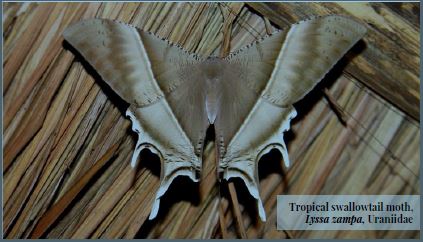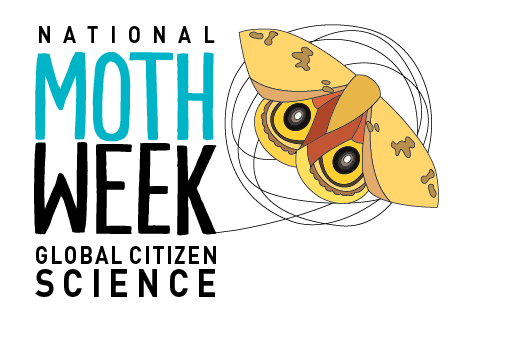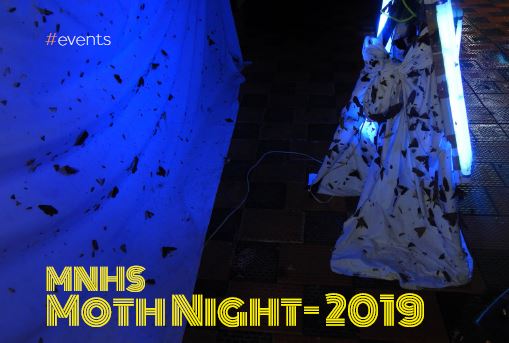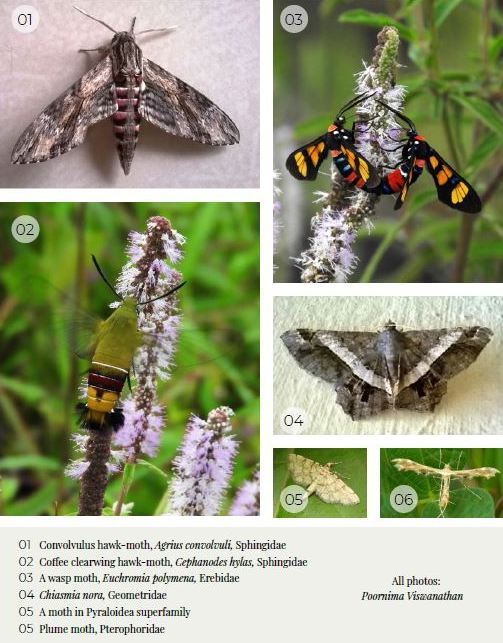Order Lepidoptera (moths and butterflies) evolved around 160 million years ago alongside flowering plants. Since then, moths have diversified spectacularly both in morphology and in habits (life cycles, mimicry, camouflage, etc.) and there are over 130,000 recorded species globally (van Nieukerken et al. 2011) with many more still awaiting discovery. India has over 12,000 known moth species (Chandra & Nema, 2007).

Moths fulfill various ecological functions among which nocturnal pollination and prey base for night-time predators are two good examples. Still, it is ironical that despite their stunning evolutionary success, moths have had difficulty garnering as much attention from us, as their day-flying sister group – the butterflies.
Moth week is an annual citizen science initiative organized worldwide to celebrate, document and learn about the staggering diversity of moths. Started in 2005 as a regional event by two moth enthusiasts in New Jersey, USA, Moth Week has become an annual global citizen-science programme since 2012 with participants from about 80 countries. Moth week is held during the last week of every July and this year it falls from July 20-28.

Moth-ing can be an interesting night-time nature activity wherein one gets to meet a range of unusual organisms (not just moths!) adapted for life in the dark. As an educator or an enthusiast, you could organise an event at your office, school/college or neighbourhood and introduce people to the varied assortment of moths around you. The programme can range from screening a documentary (on moths or nocturnal creatures) to talks to photo documentation of moths in your location of choice. For more information on how to find moths, basic presentation resources, registering your event, etc., visit: http://www.nationalmothweek.org. You can also share your observations on online platforms such as India Biodiversity Portal, iNaturalist, Project Noah, flickr, Indianmoths public group on Facebook, etc.

A one-night effort to document the moths of Malabar Wildlife Sanctuary in Kozhikode district, Kerala was undertaken on July 20, 2019. Although the weather was not exactly conducive with heavy downpour and strong winds, the sheltered set up and black lights proved a strong lure to these nocturnal denizens. Moths in astounding numbers and in diverse sizes and colours blessed us with their presence, offering an unforgettable night to the forest staff as well as the participants.
According to Mr. Balakrishnan Valappil – a moth enthusiast who led the event, over 500 species were documented along with quite a few rarities while more remain to be identified and added to the grand total.
References:
Chandra, K. & D. K. Nema. (2007). Fauna of Madhya Pradesh (including Chhattisgarh) part-I, State Fauna Series 15: 347-418. Published by Director, Zoological Survey of India, Kolkata.
Erik J. van Nieukerken, Lauri Kaila, Ian J. Kitching, Niels P. Kristensen, et. al. (2011). “Order Lepidoptera Linnaeus, 1758. In: Zhang, Z.-Q. (Ed.) Animal biodiversity: An outline of higher- level classification and survey of taxonomic richness”. Zootaxa, 1758, pp. 212–221.
